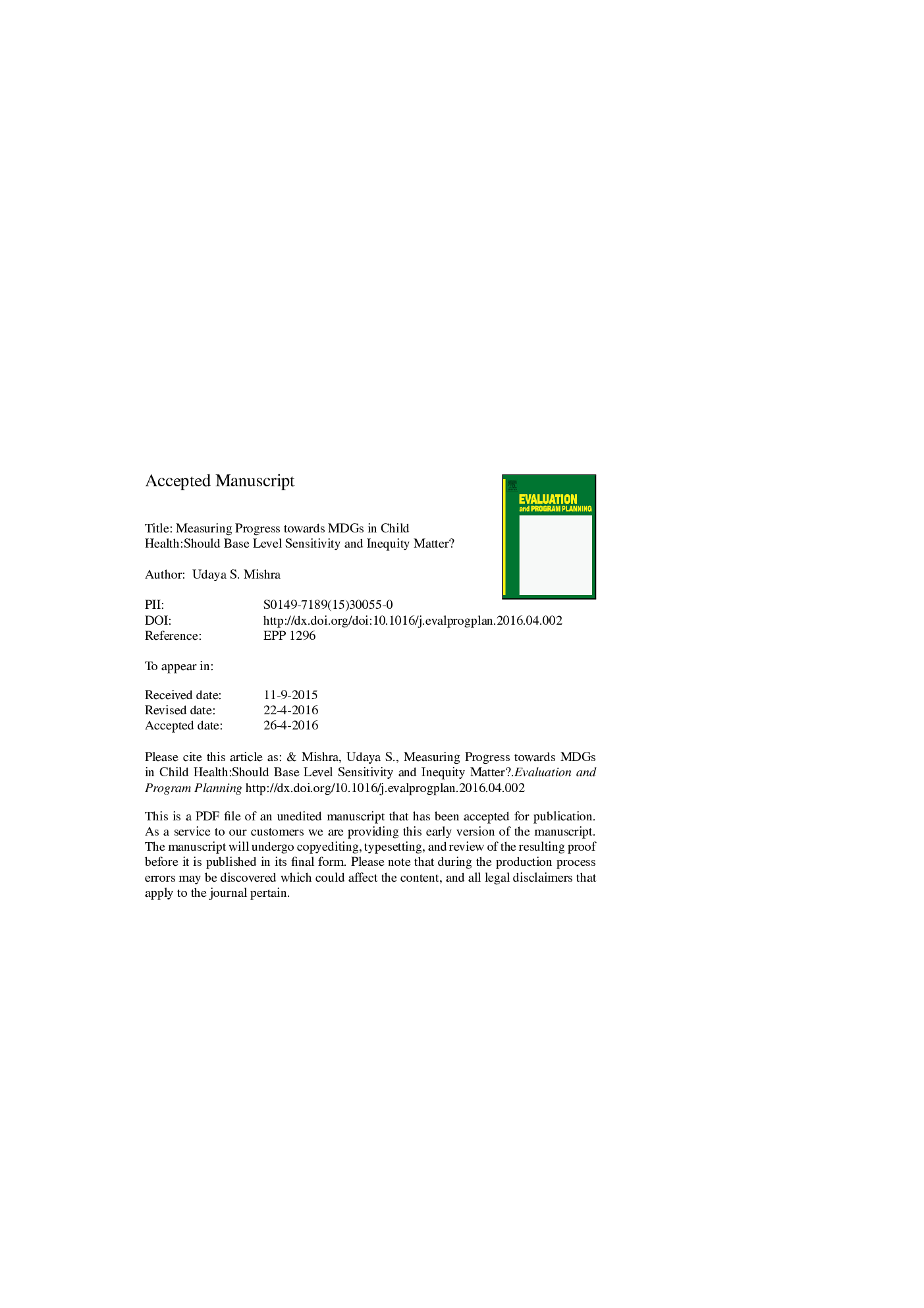| Article ID | Journal | Published Year | Pages | File Type |
|---|---|---|---|---|
| 6792562 | Evaluation and Program Planning | 2016 | 25 Pages |
Abstract
Measurement of achievement or progress towards the Millennium Development Goals (MDGs) should be suggestive of the issues involved in intertemporal comparison. Commonly, we observe that the measurement techniques such as simple differentials, rates and ratios are employed for comparisons and interpretations. But such chosen measures are insensitive to two very important and fundamental concerns. Firstly, such measures are not differentially sensitive to the base level of the indicator against which comparisons are made to comment on the progress or achievement. Secondly, it is observed that in most of the progress assessments and comparisons, without exception, the focus is on population averages thus ignoring the inherent inequalities therein. To incorporate these two concerns, a method is proposed and an illustrative application is provided to review the MDG achievements in child health across 32 developing countries. The adopted technique is effective for comparison and interpretation of progress and achievement as it augments the principles of equity as well as base-level sensitivity. More importantly, such an improved measure could help the policymakers to identify achievements in a more realistic manner and thus develop a comprehensive vision regarding social and economic achievements.
Keywords
Related Topics
Health Sciences
Medicine and Dentistry
Public Health and Health Policy
Authors
Udaya S. Mishra,
